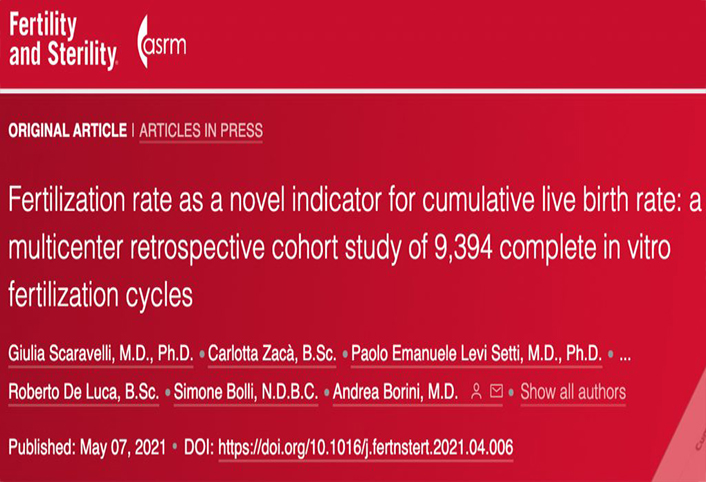
Fertilization rate as a novel indicator for cumulative live birth rate: a multicenter retrospective cohort study of 9,394 complete in vitro fertilization cycles
Objective: To appraise the fertilization rate as a predictive factor for cumulative live birth rate (CLBR).
Design: Multicenter retrospective cohort study.
Setting: Ten in vitro fertilization clinics, whose data were collected and processed by the assisted reproductive technology (ART) Italian National Registry.
Patient(s): 7,968 couples undergoing 9,394 complete intracytoplasmic sperm injection cycles.
Intervention(s): None
Main Outcome Measure(s): The primary outcome measure was the CLBR in association with the fertilization rate intervals (<65%—group 1; 65%–80%—group 2; and >80%—group 3). Further data stratification was performed on the basis of maternal age (<34, 35–38, and 39–42 years) and number of retrieved oocytes (5–7, 8–10, and > 10 oocytes).
Result(s): The CLBR was progressively higher in relation to the fertilization rate in groups 1, 2, and 3 (20.1%, 34.7%, and 41.3%, respectively). The number of recovered oocytes, embryo number per cycle, and cumulative pregnancy rate followed the same trend. The decrease in CLBR with increasing maternal age was significantly correlated with the fertilization rate and CLBR in all 3 maternal age groups. Multivariate logistic regression analysis showed fertilization rate as a factor independently associated with CLBR.
Conclusion(s): The present data indicated a positive association between the fertilization rate and the CLBR, suggesting the predictive clinical relevance of this parameter and its adoption as a key performance indicator.

